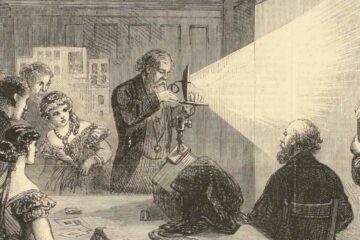Tucker, “‘Let the Microscope Tell Your Story’: Philip Gravelle and the Neglected Industrial and Advertising Contexts of Ultra-Microphotography, 1920-1940,” PhotoResearcher 17 (Spring 2012): 19-32. Pdf available here.
In the autumn of 2011, I learned about an archive of microscophical photographs that was deposited in the Staten Island Museum, NY. As soon as I had the opportunity, I drove with a friend to check it out.
The Staten Island Museum has several boxes containing some of the life’s work of Philip O. Gravelle (b. 1877), a popular scientific celebrity whose innovations with camera and microscope received wide coverage in the popular press during the 1930s. A pioneer in the use of magnification, dyes in negatives, and polarized light to make photographs of microscopic phenomena, he was also a prominent nature photographer and the first non-English scientist to win, in 1923, the prestigious Barnard medal. This medal, awarded by the London Photographic Society, was the highest achievable honor in photomicrography. Gravelle’s photographs of microscopic phenomena, which graced hundreds of glossy corporate print advertisements during the late 1920s and 1930s, pioneered new modalities of photography in American advertising.
With the help of archivist Cara Dellate, I dug into the collection. I wrote 2 pieces about Gravelle’s work: one (here) focused on his scientific photography; the other essay (‘The Hidden World of Science’), in Spontaneous Generations) on his advertising work. I hope these essays help to bring more attention to the work and diverse activities of this early American photographer.
Abstract: “Gravelle’s life and photographic productions serve as a reminder of the range of photography and its hybridity during the early decades of the twentieth century. This essay briefly describes the nature of Gravelle’s work with photography of the invisible, discusses the nature of its public appeal, and presents specimens of his work, including color photographs that have never before been reproduced. It is argued that Gravelle’s photomicrographs offer a valuable and hitherto unutilized lens through which to reconstruct the historical and cultural contexts that engendered new public meanings of “snapshots of the invisible” in the early twentieth century, an era of protean creativity and innovations with the scientific camera.”


0 Comments